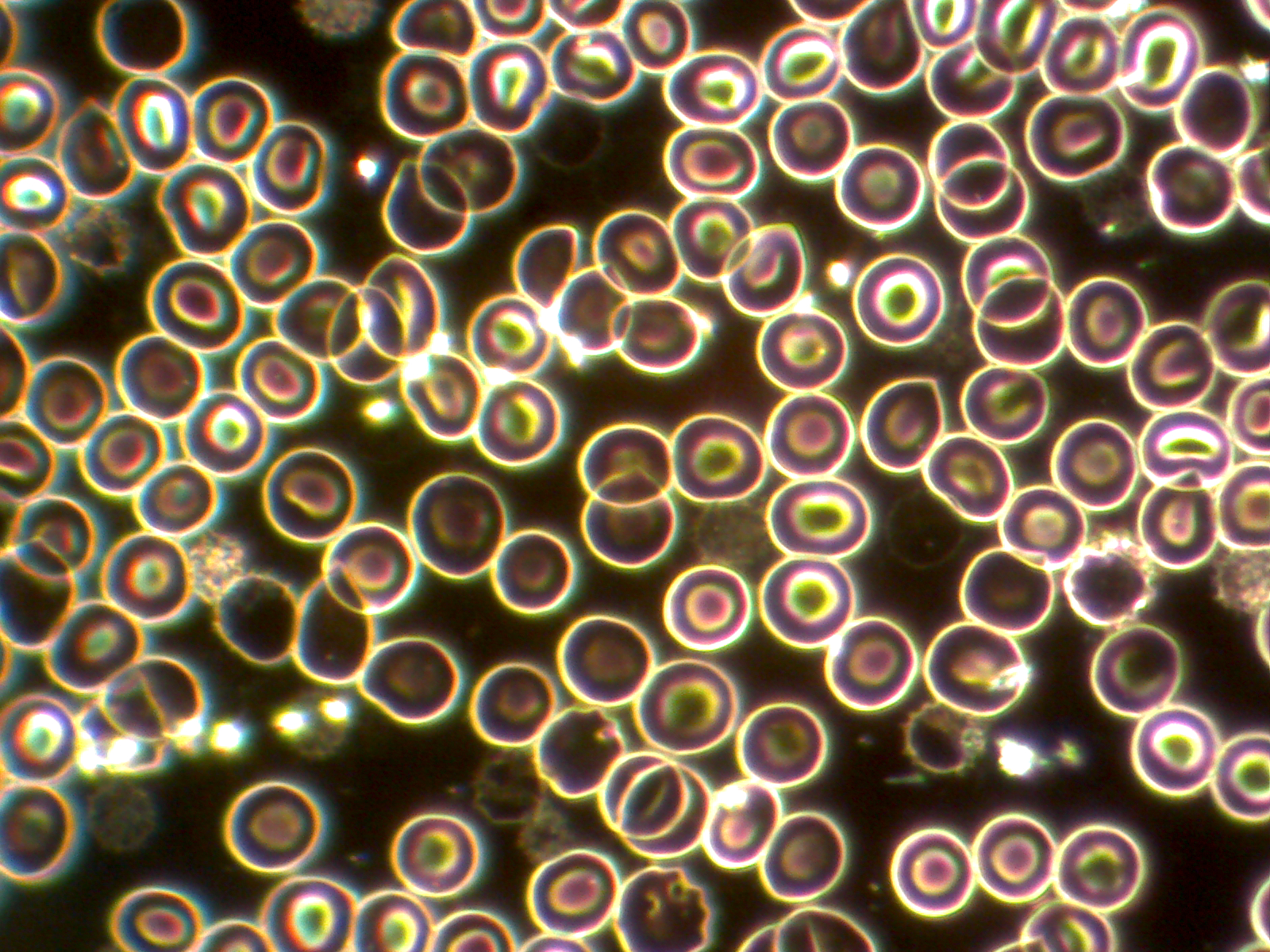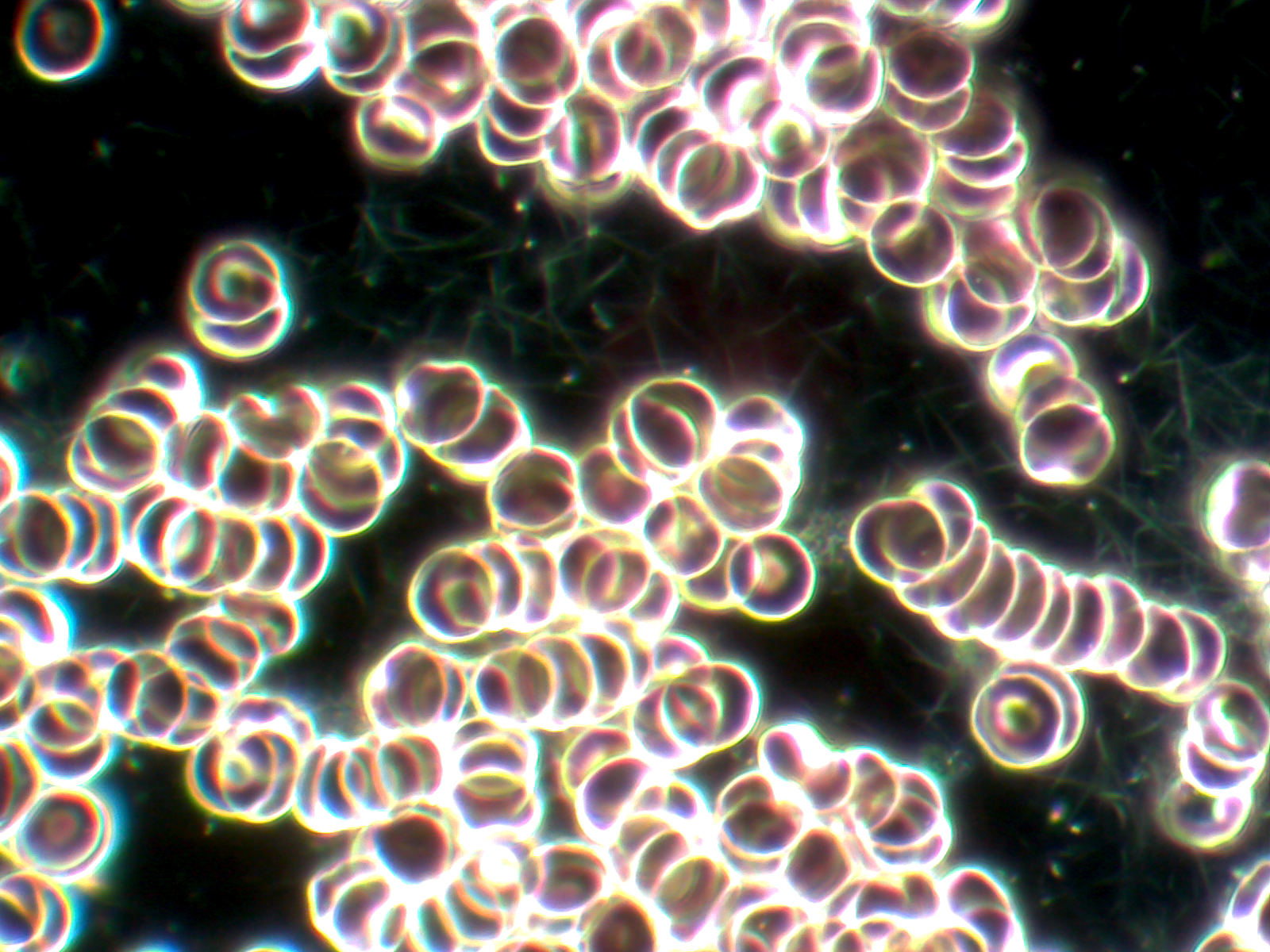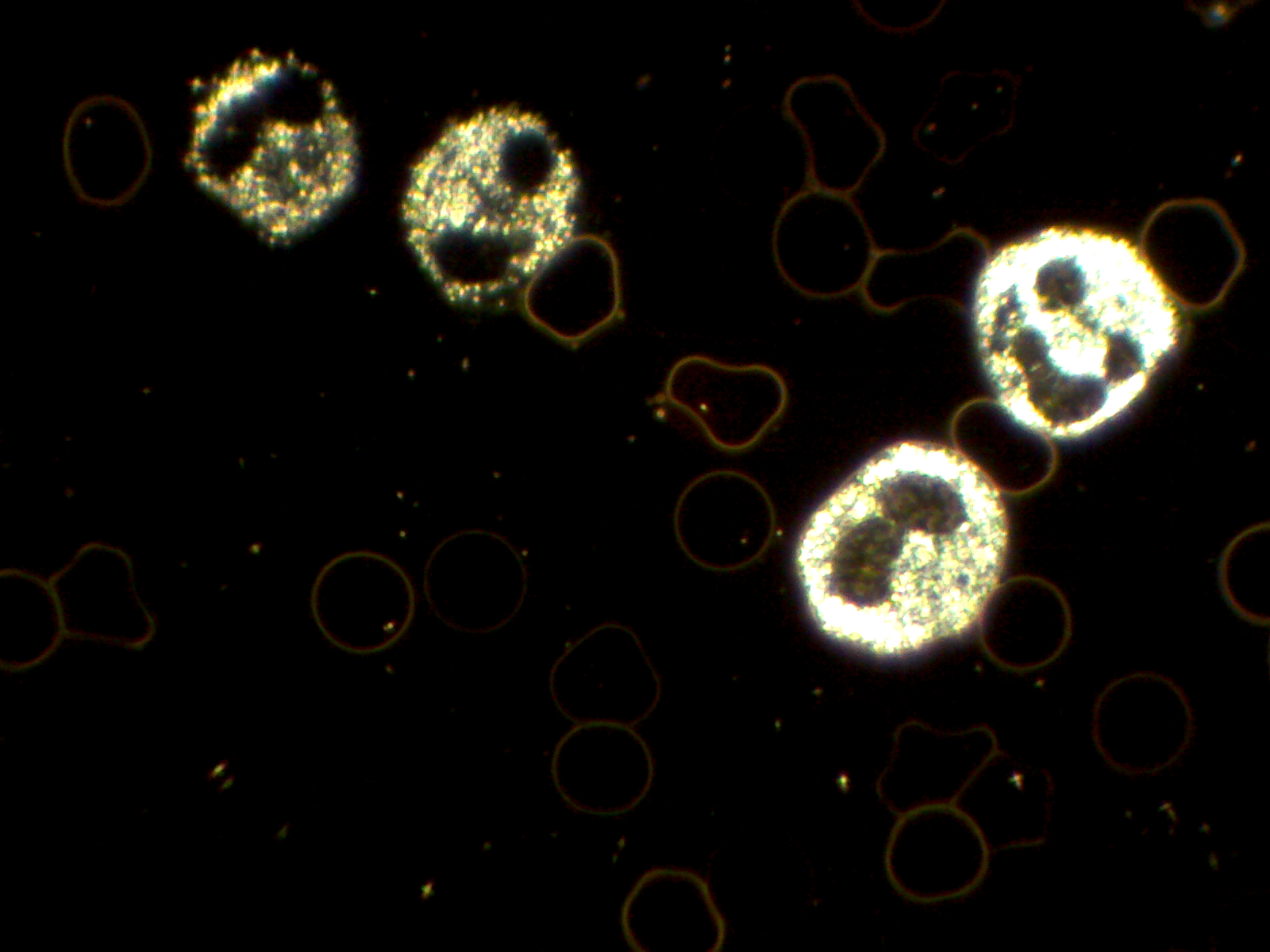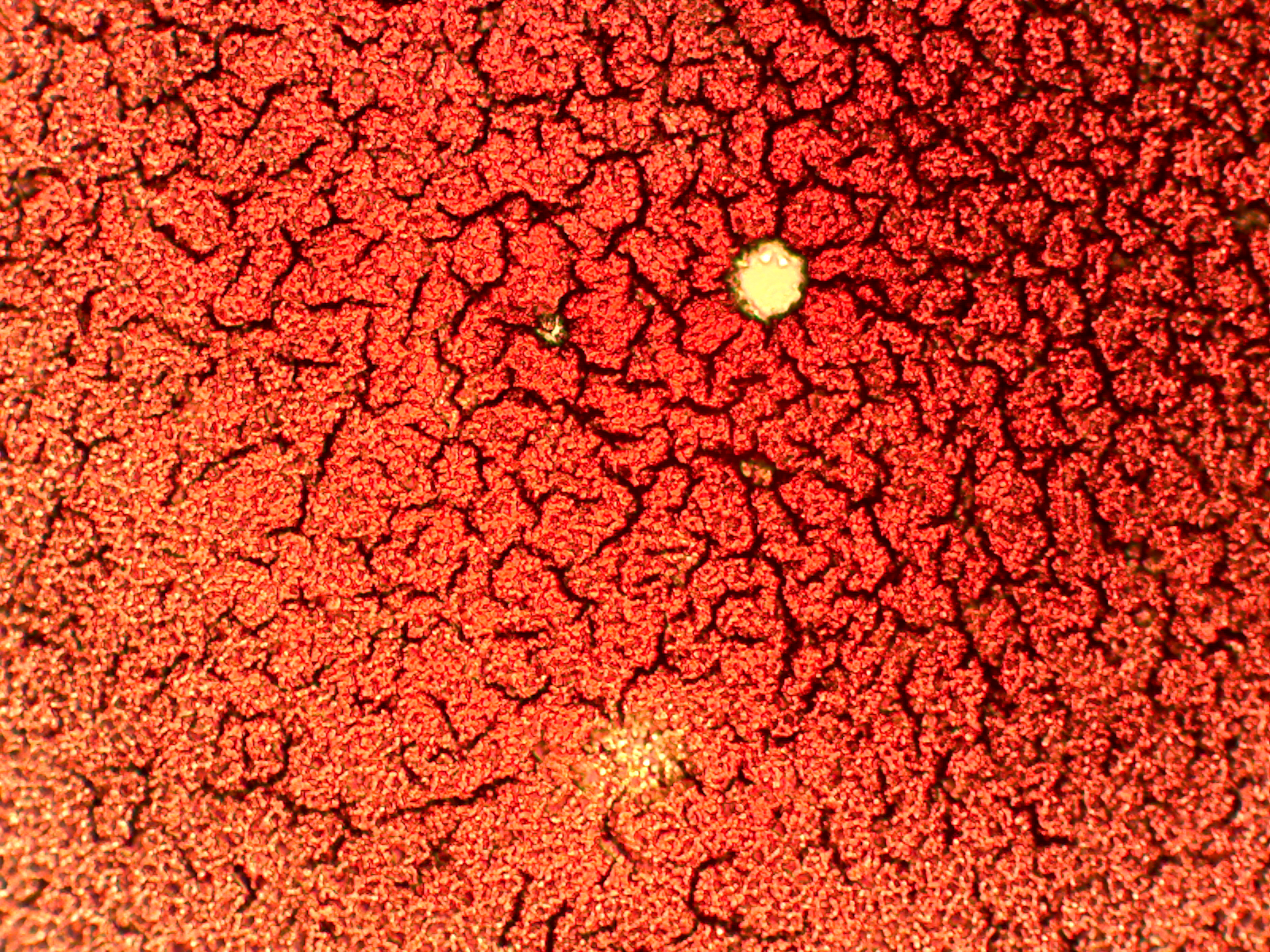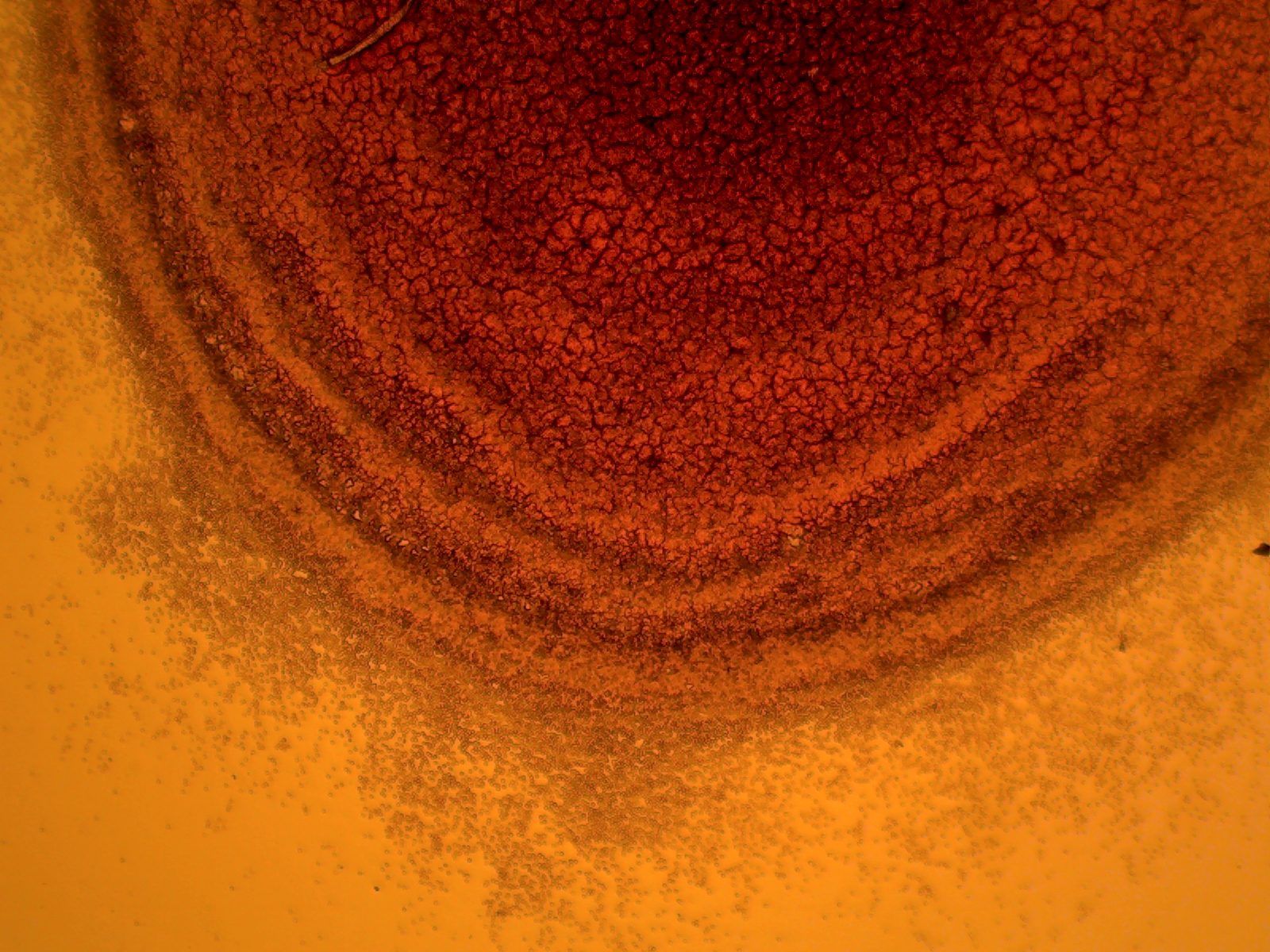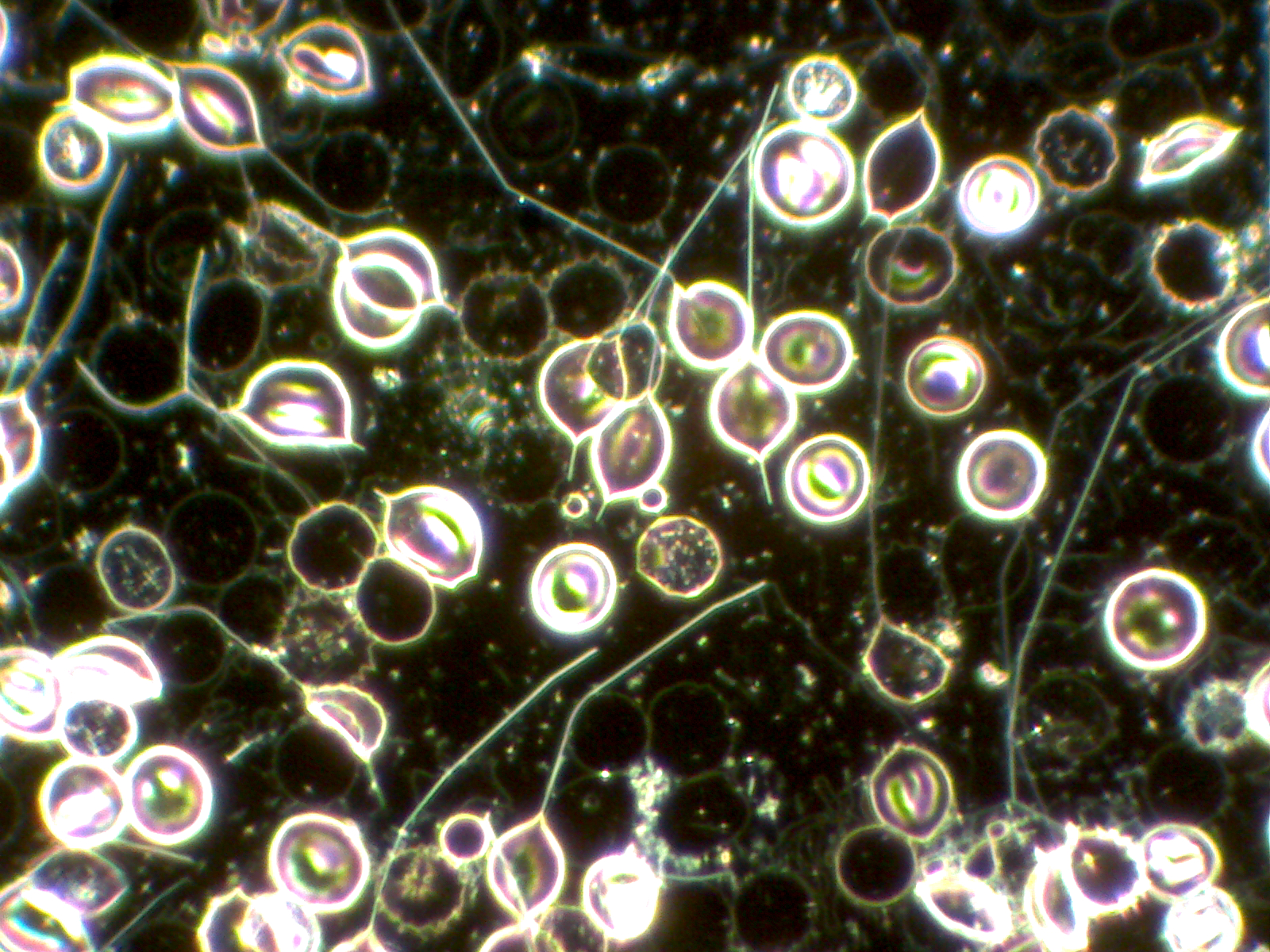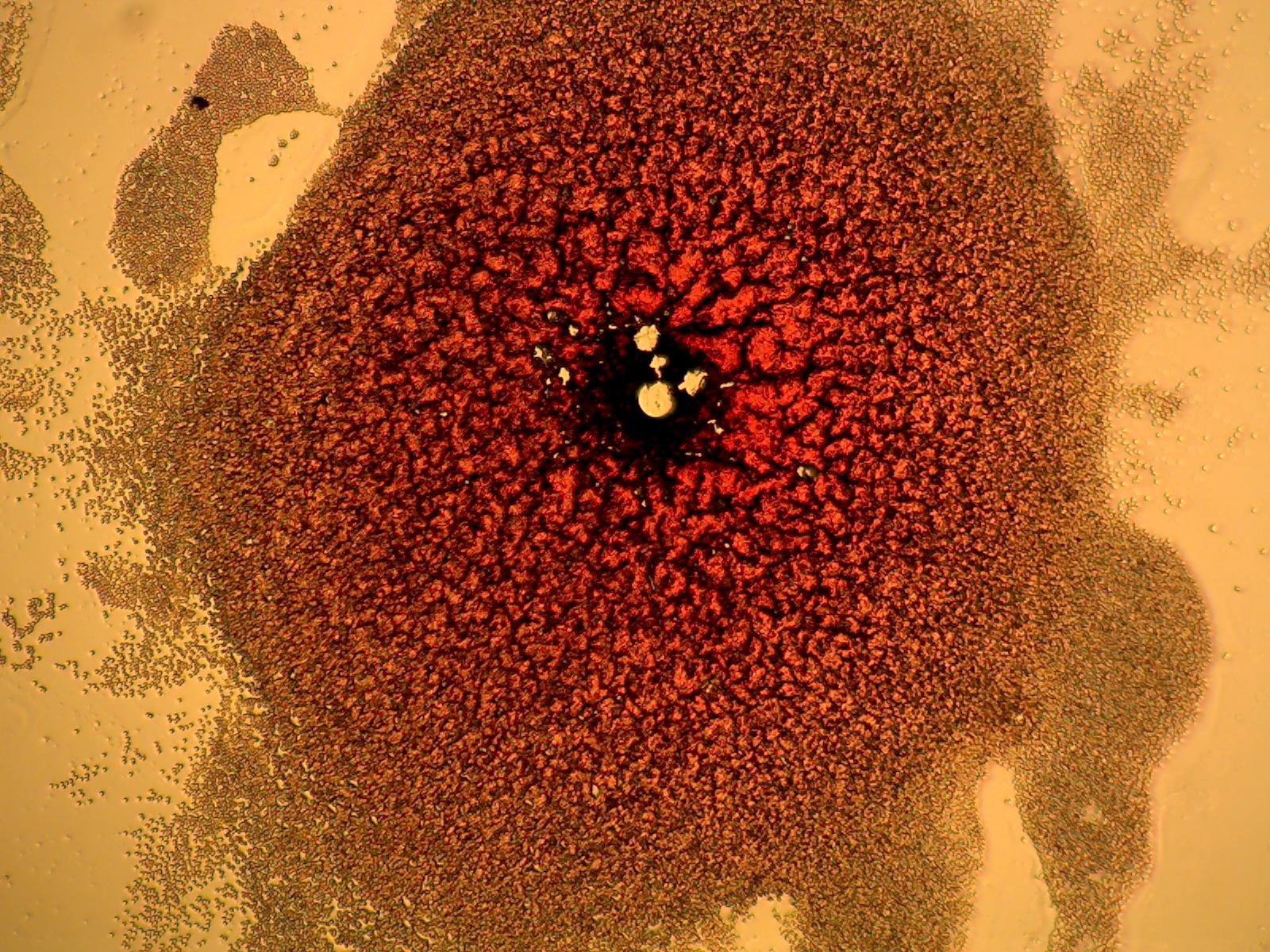So What is Live Blood Analysis?
This is a unique method of looking at your blood by extracting a small drop of it from your fingertip and viewing it immediately through the microscope to see it in its 'live' state. In this one drop of blood there are around 5 million blood cells. Most of these will be red blood cells and about 25% of them will be white blood cells.
You can sit and watch your immune system in action as your white blood cells literally crawl across the screen looking for foreign invaders and 'gobbling' them up. You can see the clotting process happening and witness various elements floating within the plasma and see the size and shape of your red blood cells.
Red blood cells need to be a certain size so that they can perform their function. Too big and they can’t fit through the capillaries. Too small and they don’t hold enough iron and can’t carry oxygen. These are just 2 examples. White blood cells, of which there are different types in the blood, can be too few or too many. They can indicate immune system strengths and weaknesses.
The plasma that these cells float in carries nutrients to be delivered to our cells as well as wastes that need to be eliminated, it can also contain various congestive elements such as thrombocytes, fibrin and other aggregates of wastes.
It is with regret that I (or any other Live Blood Analysts) am unable to share with you more information about Live Blood Analysis online because of various ASA regulations. If you would like more information please don't hesitate to contact me.
What is so Interesting about Blood?
Blood is often called the 'river of life'
There are sixty thousand miles of arteries, veins and capillaries in our body, through which the blood circulates in order to keep the us alive.
The red blood cells deliver life giving oxygen and removes carbon dioxide.
Your blood contains red blood cells, that deliver the oxygen and removes the carbon dioxide, and white blood cells, the immune system's soldiers, roaming our body, protecting us and battling to keep our internal environment free of harmful bacteria.
Whilst the red and white blood cells remain within the circulatory system, the plasma, along with all the nutrients from digested food, hormones, proteins, salt ions, enzymes and water, diffuses out of it and into the extracellular matrix.
If the blood is the river of life, then the extracellular matrix is the ocean of our body.
It surrounds all our cells, feeding them and taking away the waste, which then flows back into the blood with the plasma, ready to be filtered and cleaned by our liver, kidneys and lymph.
In short, our blood is our life force, and is made up of:
Red blood cells that are typically 7.2 microns in size: vital for carrying the iron molecules
Active and vibrant white blood cells
Strong but flexible cell membranes
Plasma, the extracellular fluid that carries the blood cells, nutrients, ions, hormones and water.
Do you have any further questions regarding Live and Dry Blood Analysis?
vs Live and Dry Blood Analysis
Standard Blood Test from your Doctor
Live Blood Analysis cannot and should never be used to diagnose any health condition. If you are at all concerned about your health then it is advisable to visit a doctor. Seeing your blood magnified 1000 times allows you to see a part of yourself at a cellular level. It can be fascinating, educational and motivating.

